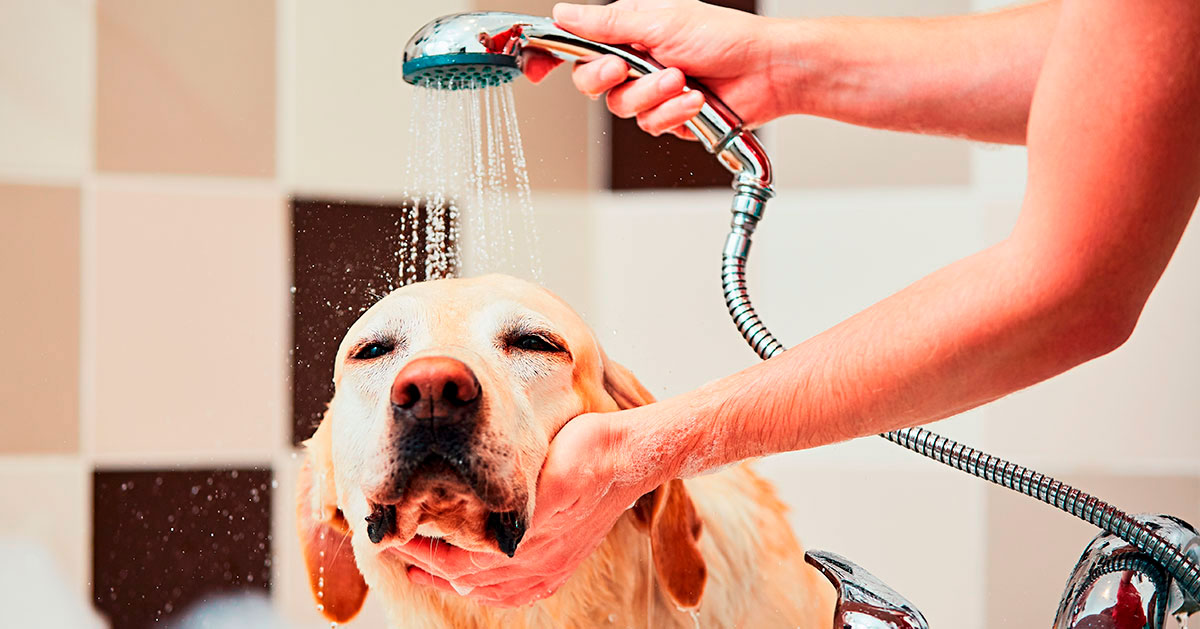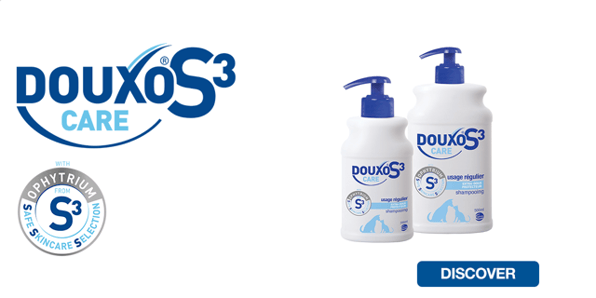Sadly, there is no hard-and-fast rule when it comes to this question. Many factors come into play when determining the ideal bathing schedule for your pet, which can range between every week to every three months or so. Keep reading to get a better idea of what might work for your pup!
Factors that influence how often a dog needs to be bathed
You’ll want to bathe your dog at least once every three months, to avoid the build-up of dirt, grease, and bacteria that could lead to skin infections.
Here’s what you need to take into consideration beyond that:
Breed, coat, and skin type
Every breed of dog has a particular type of coat. Short-haired dogs like Greyhounds and Pointers will generally not need to be bathed too often, while longer-haired and double-coated breeds may tend to trap more dirt, grime, and grease in their fur and require more frequent baths. You should keep in mind that if you have a non-shedding dog that needs to visit the groomer on a regular basis, they’ll also be getting a bath there.
You’ll also need to remember that double-coated dogs have a thick undercoat that is difficult to dry, so often they’ll be better off with a brush or wipe down rather than a bath. These dogs also shed their undercoats in spring and autumn, and a well-timed bath can help manage the shedding. In addition, some dog breeds have special requirements. For example, hairless breeds like the Chinese Crested will need more frequent baths, as often as once a week to help prevent grease from building up on their skin. Others, like the Chesapeake Bay Retriever, naturally have more oily skin and need to be bathed more often. Lastly, some longer-haired dogs tend to get faeces stuck to their little bushy behinds and need more frequent bathing to remove this.
It would be wise to learn what your dog’s coat is like and do some breed-specific research to find what would be most beneficial for your canine friend.
Activities
If your pooch is more of a couch potato, chances are they’re not getting too dirty and won’t need a bath very often. However, if you and your dog are the more adventurous type and are going to places like dog parks, forests, beaches, and mountains, they might be getting dirty or muddy more often and need more frequent baths.
Health conditions
Some dogs may have underlying health conditions that can make their skin prone to skin infections, greasy coats, dandruff and inflammation. These individuals may require more frequent medicated baths. Your vet can provide guidance on which topical products will work best for your pet in these circumstances.
Age
Puppies are a challenge to keep clean for several reasons. First of all, they are lower to the ground and on wet days this can mean their belly and legs get covered in mud. Secondly, when they’re being potty/crate trained they are more likely to step in or lie in their messes. Lastly, when learning how to play with other dogs, they tend to get rolled around a lot, so if they’re playing in an area full of dirt or mud, this can make for a very mucky puppy indeed. Since puppies tend to get cold faster than adult dogs, it is extremely important that you completely dry them off after a bath.
While it might seem like you’re constantly needing to bathe your puppy, they will require less as they grow up. You can cut down on bathing by using wipes or mousses to do spot cleaning instead of a full bath.
Owner preferences
Another factor is each individual owner’s inclinations. These will likely depend on whether the dog is allowed on the furniture or bed- a dog that sleeps right next to their owner on the bed will probably need to be a bit cleaner than one who sleeps on the floor. Your furniture colour probably also plays a role. I’m sure a few dog owners have white sofas, and those brave souls who do, will probably want to bathe their pets more often.
How often is too often?
Remember that overbathing (each week for instance) or using the wrong shampoo on your dog can lead to dry, itchy skin and a poor haircoat or in the contrary to a greasy coat as a rebound effect, in addition to leaving them more susceptible to bacterial or fungal infections. With the exception of medicated baths to treat a skin condition and hairless dogs that need to be bathed more often, you should probably aim to bathe your pup not too often as part of their regular bathing schedule, then as needed when the occasion arises. That being said, using a gentle, hydrating shampoo such as DOUXO S3® CARE will allow you to bathe them more frequently than that without worrying about drying out their coat.
A bath is not always the answer
Bathing a dog can be a hassle, so there are other methods you can use to keep your dog clean without dragging them into the bathtub.
Dry and brush
If your dog is just a little bit muddy or sandy; allow them to dry off, then use a dog brush to remove the dried-on mud or sand. This trick works better on some types of coats than others. So give it a try and see if it works for your dog.
Spot cleaning
If they’ve just managed to get their paws dirty or a few isolated spots on their backs or sides;, you can use damp paper towels, a mousse or a wipe to remove the dirt and grime from those areas. There are also dry shampoos on the market that can help keep your dog clean between baths.
How often you should bathe your dog: some final thoughts
How and when you choose to get these mud seeking missiles clean is often down to personal preference and individual dog traits.
In the end, dogs don’t care too much about what we have in mind for them, whether that’s a bathing schedule, an ideal level of cleanliness, or a desire for them not to roll around gleefully in other animals’ poop. Our furry friends live in the moment and that's why we love them. But when they return from a walk looking like a nose-to-tail-mud-covered bog monster, you know it’s time for that bath!







